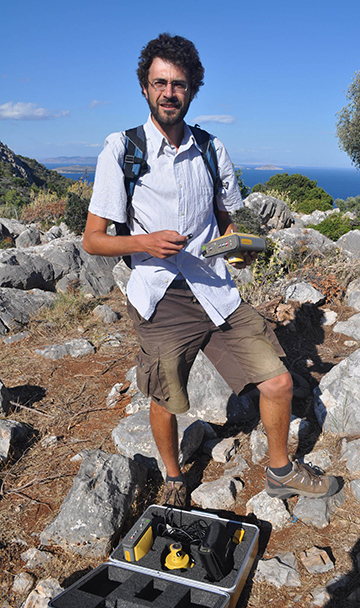
Philip Sapirstein is joining the University of Nebraska–Lincoln as Assistant Professor of Art History. He is on leave for 2013-2014 at Tel Aviv University, where he received a Fulbright USIEF (United States-Israel Educational Foundation) postdoctoral award, but will begin on campus at UNL in the Fall of 2014.
Sapirstein’s primary research has been into the analysis and visualization of Greek architecture, in particular during the origins of monumental temple architecture during the Archaic Period (7th to 6th centuries, B.C.), and much of his work has been enhanced by digital technology.
A recent project was at a site called Mon Repos in Corfu with a major, unpublished early temple, which he is currently preparing for publication using 3-D scans of the surviving material. More information on this project can be found at http://sites.museum.upenn.edu/monrepos/.
This year he began a fellowship (August 2013-2014) as a post-doctorate at the Sonia and Marco Nadler Institute of Archaeology at Tel Aviv University (TAU); supplementing this is a concurrent Fulbright USIEF postdoctoral award. Sapirstein will be teaching a course on the history of Greek architecture and its manifestation in the Near East, especially the Land of Israel. He will also be submitting an article coauthored with Alexander Fantalkin, a lecturer in archaeology at TAU, on the origins of the barrel vault in Greek, and ultimately Western, architecture from older vaulting techniques in the Near East.
In July, he began a program of research called the “Digital Architecture Project” by doing a detailed survey of the Temple of Hera at Olympia, Greece. This involved a complete photogrammetric survey and reconstruction of the remains of this temple. Sapirstein and his collaborator David Scahill are generating a detailed 3-D model of the building from photographs and survey using a new photogrammetric software package and a high quality digital camera.
He recently finished working at the Ashdod-Yam Excavations (http://www.ashdod-ham-archaeological-excavations.com/). This new project is directed by Fantalkin. Sapirstein participated in the excavations in a supervisory role, but also did more digital photogrammetry at the site to create 3-D models of all the architectural finds. During this first season, they revealed a large Hellenistric complex and a section of a major fortification wall from the 8th century B.C.
Sapirstein received his Ph.D. in the history of art and archaeology from Cornell University and his B.A. in studio art with an art history minor from the University of Notre Dame.
He has taught at Cornell and the University of Pennsylvania. He has a number of publications to his credit, as well as a major grant from the American Council of Learned Societies. Last year he was a NEH Fellow at the Albright Institute of Archaeological Research.